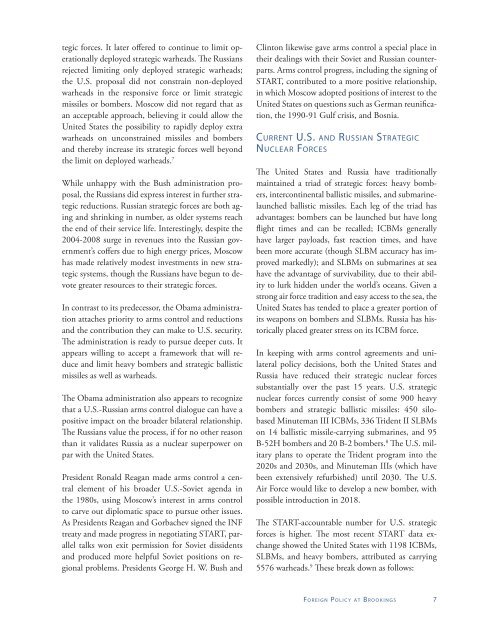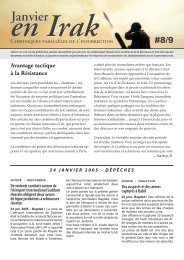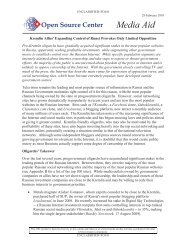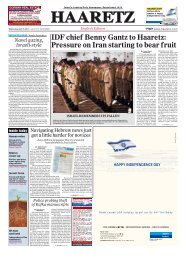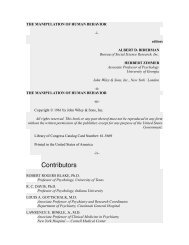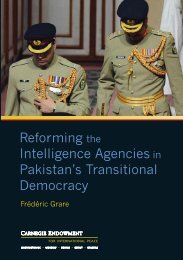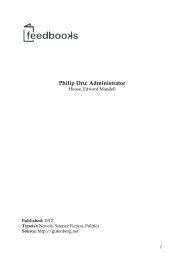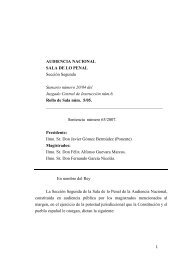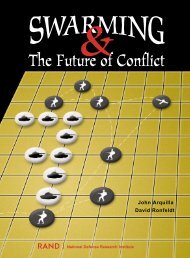Beyond START - Brookings Institution
Beyond START - Brookings Institution
Beyond START - Brookings Institution
You also want an ePaper? Increase the reach of your titles
YUMPU automatically turns print PDFs into web optimized ePapers that Google loves.
tegic forces. It later offered to continue to limit operationallydeployed strategic warheads. The Russiansrejected limiting only deployed strategic warheads;the U.S. proposal did not constrain non-deployedwarheads in the responsive force or limit strategicmissiles or bombers. Moscow did not regard that asan acceptable approach, believing it could allow theUnited States the possibility to rapidly deploy extrawarheads on unconstrained missiles and bombersand thereby increase its strategic forces well beyondthe limit on deployed warheads. 7While unhappy with the Bush administration proposal,the Russians did express interest in further strategicreductions. Russian strategic forces are both agingand shrinking in number, as older systems reachthe end of their service life. Interestingly, despite the2004-2008 surge in revenues into the Russian government’scoffers due to high energy prices, Moscowhas made relatively modest investments in new strategicsystems, though the Russians have begun to devotegreater resources to their strategic forces.In contrast to its predecessor, the Obama administrationattaches priority to arms control and reductionsand the contribution they can make to U.S. security.The administration is ready to pursue deeper cuts. Itappears willing to accept a framework that will reduceand limit heavy bombers and strategic ballisticmissiles as well as warheads.The Obama administration also appears to recognizethat a U.S.-Russian arms control dialogue can have apositive impact on the broader bilateral relationship.The Russians value the process, if for no other reasonthan it validates Russia as a nuclear superpower onpar with the United States.President Ronald Reagan made arms control a centralelement of his broader U.S.-Soviet agenda inthe 1980s, using Moscow’s interest in arms controlto carve out diplomatic space to pursue other issues.As Presidents Reagan and Gorbachev signed the INFtreaty and made progress in negotiating <strong>START</strong>, paralleltalks won exit permission for Soviet dissidentsand produced more helpful Soviet positions on regionalproblems. Presidents George H. W. Bush andClinton likewise gave arms control a special place intheir dealings with their Soviet and Russian counterparts.Arms control progress, including the signing of<strong>START</strong>, contributed to a more positive relationship,in which Moscow adopted positions of interest to theUnited States on questions such as German reunification,the 1990-91 Gulf crisis, and Bosnia.Current U.S. and Russian StrategicNuclear ForcesThe United States and Russia have traditionallymaintained a triad of strategic forces: heavy bombers,intercontinental ballistic missiles, and submarinelaunchedballistic missiles. Each leg of the triad hasadvantages: bombers can be launched but have longflight times and can be recalled; ICBMs generallyhave larger payloads, fast reaction times, and havebeen more accurate (though SLBM accuracy has improvedmarkedly); and SLBMs on submarines at seahave the advantage of survivability, due to their abilityto lurk hidden under the world’s oceans. Given astrong air force tradition and easy access to the sea, theUnited States has tended to place a greater portion ofits weapons on bombers and SLBMs. Russia has historicallyplaced greater stress on its ICBM force.In keeping with arms control agreements and unilateralpolicy decisions, both the United States andRussia have reduced their strategic nuclear forcessubstantially over the past 15 years. U.S. strategicnuclear forces currently consist of some 900 heavybombers and strategic ballistic missiles: 450 silobasedMinuteman III ICBMs, 336 Trident II SLBMson 14 ballistic missile-carrying submarines, and 95B-52H bombers and 20 B-2 bombers. 8 The U.S. militaryplans to operate the Trident program into the2020s and 2030s, and Minuteman IIIs (which havebeen extensively refurbished) until 2030. The U.S.Air Force would like to develop a new bomber, withpossible introduction in 2018.The <strong>START</strong>-accountable number for U.S. strategicforces is higher. The most recent <strong>START</strong> data exchangeshowed the United States with 1198 ICBMs,SLBMs, and heavy bombers, attributed as carrying5576 warheads. 9 These break down as follows:Fo r e i g n P o l i c y at Bro o k i n g s 7


